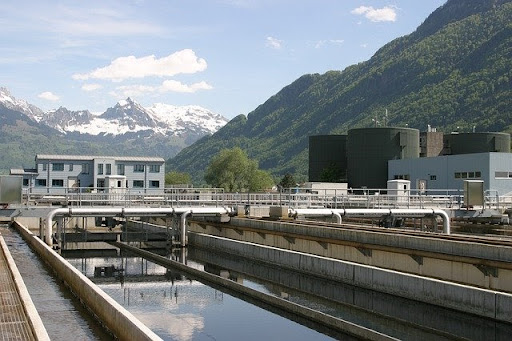Water is essential for life. But all the water on Earth’s surface combined makes up only about 0.001% of all the water on our planet, and it is not evenly distributed. Much of this valuable resource is locked up in permafrost at the North and South Poles, while vast stretches of dry land are left without a drop of water to drink. The average person needs between 2-3 liters (6-9 cups) per day for basic hygiene and just drinking – that’s about 150 gallons or 600 liters per month. And we use more every day: as populations grow and developing countries industrialize, demand increases by 1% per year.
What is waste water?
Wastewater is water that goes down our drains and toilets after we have finished using them. This includes sewage – black water that humans excrete from sinks, baths, toilets, etc. – and rainwater runoff, also known as gray water. While most of us do not consider wastewater until it is time to flush, it is important to understand what happens to this water after we’re done using it. After all, wastewater is one of our most precious resources when we use it waste water treatment plant and rainwater management, amongst many other ways. About 32% of US homes are equipped with equipment that can work with gray water, including washing machines, dishwashers, sinks, showers and toilets. Gray water is also sometimes purified for reuse as irrigation water or even drinking water.
Where does wastewater come from?
Wastewater come from every household in the world – rich or poor, urban or rural – and flows through complex underground pipelines to sewage treatment plants. In the US, homes generally have a septic tank or connection to a municipal sewer system that carries wastewater from your home to a larger sewage treatment facility in your community. By contrast, in developing countries, most people lack sanitation infrastructure and must depend on inexpensive latrines built over the nearest rubbish collection pond.
What happens to wastewater once it reaches the treatment plant?
In sewage treatment plants, wastewater and rainwater are combined with oxygen, microorganisms and sunlight to treat the water so that it’s clean enough for humans to swim or fish. This process is called wastewater treatment and it works by exploiting the indisputable fact that microorganisms like to feed on pollution and other things we do not want in our water. Wastewater goes through three main treatment processes: solids separation, liquid clarification (also called biological treatment), and liquid disinfection.
Sewage treatment plants cover several different steps to remove most pollution from wastewater, including solid waste (such as human excrement and unwashable toilet paper) and liquid waste (soaps, chemicals, oils).
How is wastewater treated?
The first step for a sewage treatment plant is to separate the solid waste from the liquid waste. Solid waste (called sludge) is a viscous and watery material that’s passed through a processing screen or press to remove as much solid waste as possible before the wastewater proceeds to the next stage of treatment.
The liquid waste (called the supernatant) is then piped into a large tank called a trough where the bacteria digest most of the organic matter in the wastewater. The liquid that remains after this process – which still looks very dirty – mixes with microorganisms and is exposed to oxygen, sunlight and carbon dioxide to become purified water.
What happens to wastewater after it leaves our homes?
After the waste has gone through the first two processes, it is prepared for the final step, which is cleaning up as much of the waste water as possible before being discharged back into the nearest river or sea. This stage is called disinfection because the wastewater is treated with chlorine or other chemicals to kill any remaining pollution. Before entering the water, wastewater goes through a second round of solids separation and liquid clarification to remove any added materials that could make the water cloudy.
The cleaned wastewater generally goes to a holding tank where the sediment settles to the bottom and the oxygen from the air bubbles helps remove the ammonia from the water. Finally, after treated with chlorine or other chemicals to kill germs, waste water is released into the nearest body of water such as a river or sea.
What happens to wastewater after it leaves our homes?
Now that water is becoming more manageable at 120 million liters a day, treatment plant operators need to make sure that bacteria levels are low enough that the water is safe for human contact. The most common way to do this is chlorination, which kills bacteria by adding chlorine (Cl) to wastewater. Finally, once the treatment plant is certain that all the water is clean, it’s discharged into natural waterways such as rivers or oceans.
The wastewater we generate every day is a valuable resource that’s used in many ways. After going through a sophisticated process of separation, clarification, and disinfection, water is clean enough to be released back into our natural environment. We need to understand where our wastewater comes from and what happens to it after we finish using it so we can continue to use this precious resource responsibly.











